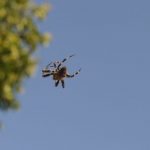 Miscellaneous
Miscellaneous  Miscellaneous
Miscellaneous  History
History 10 Huge Historical Events That Happened on Christmas Eve
 Music
Music 10 Surprising Origin Stories of Your Favorite Holiday Songs
 History
History 10 Less Than Jolly Events That Occurred on December 25
 Weird Stuff
Weird Stuff 10 Funny Ways That Researchers Overthink Christmas
 Politics
Politics 10 Political Scandals That Sent Crowds Into the Streets
 Weird Stuff
Weird Stuff Ten Bizarre Facts About The Doge Meme
 Our World
Our World 10 Ways Your Christmas Tree Is More Lit Than You Think
 Movies and TV
Movies and TV The 10 Coolest Stars to Set Sail on The Love Boat
 History
History 10 Things You Didn’t Know About the American National Anthem
 Miscellaneous
Miscellaneous Top 10 Things Crypto Was Supposed to Change & What Actually Did
 History
History 10 Huge Historical Events That Happened on Christmas Eve
 Music
Music 10 Surprising Origin Stories of Your Favorite Holiday Songs
Who's Behind Listverse?

Jamie Frater
Head Editor
Jamie founded Listverse due to an insatiable desire to share fascinating, obscure, and bizarre facts. He has been a guest speaker on numerous national radio and television stations and is a five time published author.
More About Us History
History 10 Less Than Jolly Events That Occurred on December 25
 Weird Stuff
Weird Stuff 10 Funny Ways That Researchers Overthink Christmas
 Politics
Politics 10 Political Scandals That Sent Crowds Into the Streets
 Weird Stuff
Weird Stuff Ten Bizarre Facts About The Doge Meme
 Our World
Our World 10 Ways Your Christmas Tree Is More Lit Than You Think
 Movies and TV
Movies and TV The 10 Coolest Stars to Set Sail on The Love Boat
 History
History 10 Things You Didn’t Know About the American National Anthem
From Animals to Algae: 10 Weird and Astonishing Stories
As human beings, we’re most fascinated by stories of other human beings overcoming insurmountable odds to achieve a goal or achieve lasting success. But more generally, we love to see success in any form. For example, seeing an orangutan successfully driving a golf cart deeply inspires us because we thought it was impossible before we actually saw it happen. Anytime we witness someone (or something) doing what we thought was impossible, barriers fall in our minds. For example, when Roger Bannister broke the 4-minute mile barrier on May 6, 1954, it opened the floodgates for other runners. Australian John Landy surpassed his record just 46 days later, and several others achieved or surpassed the feat soon after.
Animals receive our respect because, like us, their lives are a constant battle and a constant struggle. They face diseases, predators, climate change, and other challenges that either make them stronger or end their lives.
In this list, we’ll review ten stories about animals and other life forms that surprise us and sometimes sadden us. No matter what we do, we can’t ignore the other life forms that inhabit Earth with us: we have so much to learn from them.
Related: Ten Oddball News Stories out of Canada
10 Using Algae to Combat Climate Change in Africa’s Sahara Desert
Thousands of years ago, the Sahara Desert was a fertile savanna with abundant wildlife, lakes, and rivers. About 5,000 years ago, it began to dry out, leading to the vast arid landscape that we know today. Since the desert is huge and sparsely populated, it provides an ideal testing ground for experiments like using algae to soak up atmospheric CO₂.
London-based Brilliant Planet is cultivating algae in one of Morocco’s coastal towns for this scientific experiment. Their goal is to combat climate change by removing significant amounts of CO₂ from the atmosphere through algae farming. The process involves shallow, seawater-filled ponds that replicate natural algal blooms. From small samples, the algae grow exponentially within a few weeks, absorbing carbon and releasing oxygen back to Earth’s atmosphere through photosynthesis. Once harvested, the algae are dried and stored, locking away carbon for up to 2,000 years.
With a target to remove one million metric tons of CO₂ annually, the equivalent of eliminating 217,000 cars from the roads, this $1 billion project plans to expand to 24,700 acres (10,000 hectares), with additional potential sites in other African countries, like Namibia.[1]
9 Strange Collections: Georgia Man Harbors Exotic Animals
We get it. People love to collect and hoard things. Coins, vinyl records, comic books, or classic toys—these are considered “normal” collectibles. But one Georgia man recently took collecting to a weird new level: He compiled a large collection of exotic animals.
JaeQuan Smith Devers of Clayton County didn’t just dabble in wild creatures; his collection included a ring-tailed lemur, an American alligator, black and white tegus, several snakes, and 13 dogs. When authorities raided his home on October 17, 2024, they found these animals alongside 2.8 pounds (1.27 kg) of marijuana. Devers insisted that he was rescuing the creatures, but officials suspect that this was an illegal exotic animal trade.
Lemurs are critically endangered, tegus and pythons are invasive, and alligators are dangerous predators. Devers didn’t have permits for any of them. While he claimed that his intentions were pure, this unusual case shows that, no matter what, there will always be people who do things far out of the ordinary.[2]
8 West Virginia Park Gets a Visit from a Mysterious Creature
The X-Files was a very popular television show in the 1990s and early 2000s. It told offbeat fictional stories of aliens, conspiracies, and strange creatures like the chupacabra, a legendary blood-sucking beast from Latin American folklore. While fictional, the show was partly inspired by weird real-life stories. A recent animal sighting in West Virginia could have been pulled straight from an X-Files episode.
On October 24, 2024, Brittany Keller was walking through Ritter Park in Huntington, West Virginia, when she spotted a peculiar-looking animal mingling with a group of deer. It looked nothing like the other animals. She grabbed her phone and began filming the strange creature. She shared the footage online to see if anyone could identify it. Guesses poured in, with some suggesting that it might be a lemur. But there was one problem: Lemurs are native to Madagascar, about 9,000 miles (14,500 km) southeast of Huntington, West Virginia. Other people proposed more plausible theories: they proposed that the creature was a fox suffering from mange, a condition that causes severe hair loss.
This wasn’t the only X-Files-like mystery that happened in October 2024. Just two days before the West Virginia sighting, an unknown winged and horned creature was caught on camera at the Bristol Zoo Project in England. Maybe it’s time to bring back The X-Files in 2025.[3]
7 An Alligator Is Ready for Takeoff
Alligators are powerful apex predators, and they’re used to getting exactly what they want. An alligator is a prototypical boss, a boss that takes orders from no one. That includes the air traffic controllers at the Orlando Executive Airport in Orlando, Florida. Even seasoned Florida locals were shocked to see a massive 10-foot (3-meter) alligator taking a leisurely stroll across the airport’s tarmac.
One lucky airline passenger captured the moment on video as the alligator slowly ambled toward a grassy area near the runway. This kind of encounter isn’t all that uncommon in Florida. Alligators are infamous for showing up in unexpected places, like backyard swimming pools and golf courses.
Even though it’s a part of the United States, we have to remember that everything is done a little bit differently in Florida.[4]
6 Goat Rescue Mission: A Literal Cliffhanger in Hawaii
Baby goats, and goats in general, are designed to be excellent mountain climbers. They have extremely powerful hind legs and specialized hooves that provide traction on mountain ledges and cracks. However, these design features can sometimes make goats, especially very young goats, a little overconfident in rough mountain terrain. A baby goat recently learned this lesson the hard way, but thankfully, this story has a very happy ending.
In early November 2024, a baby goat found itself in a life-or-death situation on a steep cliff in West Oahu, Hawaii. The poor kid (the proper name for baby goats) had been stranded for four days with no way to climb back up or down. A local resident named Ben Hansen spotted a post about the goat on social media and shared it with his wife, Govinda. Inspired to help, Govinda teamed up with local Hawaiian climbers Caleb Morrison and Travis Woo to launch a daring rescue mission.
Armed with climbing gear and determination, the trio carefully scaled the rugged terrain to reach the terrified little goat. Using an apple to gain its trust, they managed to safely bring the animal down after a tense 45 minutes. The goat, now named Bala, which means “white” in Hawaiian, was taken to the Aloha Animal Sanctuary, where it received much-needed medical care.[5]
5 Kenyan Plastic-Eating Insect Discovered
Plastic pollution is becoming an alarming environmental problem because it takes hundreds of years to degrade, leading to plastic accumulation in landfills and natural ecosystems. Microplastics are increasingly being detected in human bodies, including in blood and lung tissue. However, recent discoveries lead to hope that we may be able to combat this crisis in the future.
Scientists in Kenya have identified the larvae of the darkling beetle (Alphitobius diaperinus), commonly known as the lesser mealworm, that eats plastic. These larvae have shown an ability to consume and break down polystyrene, one of the most persistent plastics used in packaging. This discovery gives us hope that cost-effective and environmentally friendly alternatives to traditional recycling methods will be created soon.
Polystyrene is extremely durable and chemically stable. This makes it very difficult to recycle without creating harmful byproducts. However, the Kenyan larvae naturally digest the material due to the unique microbial communities in their gut. Instead of relying on the larvae themselves, scientists aim to isolate and replicate these microbes and enzymes to develop scalable real-world solutions. This breakthrough means that we might eventually triumph over one of humanity’s greatest environmental challenges.[6]
4 California Sea Lions Act Strangely Due to Brain-Attacking Algae
Certain algae can be dangerous for living organisms to consume because they generate a neurotoxin known as domoic acid. This toxin can damage or kill brain cells in affected animals, leading to serious neurological impairments or, in many cases, death. Sea lions are particularly vulnerable to this affliction because they are exposed to domoic acid through a food chain contaminated by harmful algal blooms.
Sea lions along California’s coastline are exhibiting strange and alarming behaviors, such as disorientation, seizures, and strandings. These symptoms are linked to domoic acid poisoning caused by exposure to the byproducts of harmful algal blooms. The domoic acid neurotoxin accumulates in fish and shellfish, which are consumed by sea lions. The neurotoxin then attacks their brains, causing severe neurological damage.
Marine biologists at The Marine Mammal Center in Sausalito have been overwhelmed with cases of poisoned sea lions. Domoic acid primarily targets the hippocampus, the brain region responsible for memory and spatial navigation. While some sea lions recover, many suffer long-term damage, and others succumb to the toxin’s effects. As the world’s oceans warm due to climate change, the algae blooms that produce the neurotoxin are becoming more frequent and widespread.[7]
3 Man Breaks Zoo Rules and Gets Grabbed by an Orangutan
Orangutans are built to swing through trees, and they possess far greater upper body strength than human beings. Even the strongest humans on Earth are no match for the average orangutan’s raw power. A not-too-bright visitor to a zoo in Indonesia recently received a hands-on demonstration of this phenomenal strength.
Zoos have strict safety protocols for a reason, but not all visitors follow the rules. At the Kasang Kulim Zoo in Indonesia, an orangutan named Tina made headlines when a visitor, Hasan Arifin, ignored warning signs and approached her enclosure. Reportedly climbing over a safety barrier to film a close-up video, Arifin learned the hard way why such rules exist. The situation escalated when Tina reached through the bars, grabbed his shirt, and pulled him forcefully toward the cage.
Videos of the incident show Arifin struggling to free himself as Tina gripped his leg, nearly lifting him off the ground. Onlookers managed to intervene, and the man escaped without serious injury. In perhaps the most obvious statement ever made, zoo officials confirmed that Arifin had violated safety rules designed to protect both visitors and animals.[8]
2 Orangutan Caught Driving a Golf Cart
Besides being incredibly strong, orangutans are also highly intelligent. One orangutan recently stunned the internet with an unusual skill: driving a golf cart in a style similar to a human being. Rambo, an orangutan residing at a private zoo in Dubai, became a viral sensation after videos surfaced showing her confidently driving the vehicle. The footage, initially shared in 2021, left viewers amazed and questioning whether it was real or AI-generated.
In the video, Rambo expertly maneuvers the golf cart, suggesting she likely received extensive training. While some skeptics doubted the authenticity of the clips, reports confirm that the footage is genuine. Orangutans have demonstrated remarkable intelligence in the past, such as performing complex tasks using tools.
While Rambo’s abilities are impressive, many viewers raised concerns about the ethics of training animals to perform acts for human entertainment. Such practices often prioritize the spectacle over the animal’s well-being, and we need to balance showcasing intelligence with ensuring the ethical treatment of animals.[9]
1 Colorado Man Kills Attacking Mountain Lion with Bare Hands
The Biblical passage Judges 14:5–6 tells the story of how Samson killed a lion with his bare hands. Real life often imitates literature, and a recent story from Colorado documents a man’s fierce battle for survival against a wild mountain lion.
On February 4, 2019, 31-year-old Travis Kauffman was trail running near Fort Collins, Colorado, when he was ambushed by a young mountain lion. The 50-pound (23-kilogram) cat pounced on him from behind, biting his wrist and clawing at his face and neck. Kauffman fought back, first attempting to stab the animal with sticks and then striking it with a rock. In a desperate move, he managed to pin the lion’s back legs and step on its neck, and he eventually suffocated it.
After the struggle, Kauffman hiked three miles back to the trailhead, where he encountered other runners who assisted him. He was treated at a hospital for injuries, including facial lacerations and puncture wounds on his arms and legs. Wildlife officials confirmed the attack and the mountain lion’s death, noting that such incidents are rare but can occur when young lions learn to hunt. As Samson did in the Bible story, Kauffman found the strength to overcome a seemingly insurmountable foe.[10]








